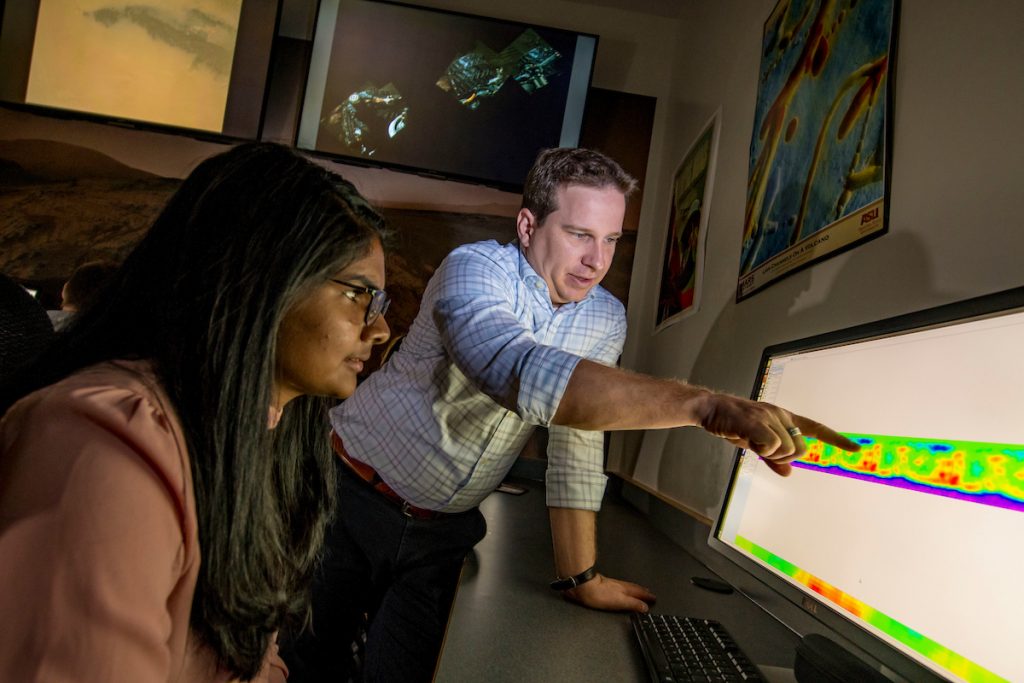Orbiting 11 billion miles from the sun, this tiny world offers additional clues in the search for the proposed Planet Nine.

Meteor Crater offers open-air classroom, lab for NAU students and researchers (VIDEO)
Before they walked on the moon, they walked in Meteor Crater.
This geologic formation, about 30 miles east of Flagstaff, was pivotal to the United States’ efforts to learn about the Moon; the astronauts who first set foot on the Moon all trained and prepared at Meteor Crater. Today, scientists and students from NAU and other institutions go to the crater, which is the best-preserved meteor crater on the planet, to study the interactions between other celestial bodies… Read more
Graduate Heshani Pieris: Faculty mentoring helped astronomy student from Sri Lanka find a place in her field

Dec. 6, 2018
Since she was 12 years old, Heshani Pieris has stared into the sky, wondering what the different planetary bodies were made of, whether life existed elsewhere and how the planets, stars, sun, comets and asteroids interacted with each other. She didn’t just want answers to her questions, though; she wanted to find the answers herself through telescopes, Mars rovers and data.
Thus, when… Read more
NASA reveals more information on first interstellar object – Xinhua | English.news.cn
LOS ANGELES, Nov. 16 (Xinhua) — Scientists at NASA’s Jet Propulsion Laboratory (JPL) in California have found new information about the size and reflectivity of `Oumuamua, the first interstellar object discovered within our solar system last year.
“We estimated the size and reflectivity of `Oumuamua as a comet-like body, and suggested a science-based explanation for the various observations,” David Trilling, lead author on the new study and a professor of astronomy at Northern Arizona University, told Xinhua on Friday.
`Oumuamua, which… Read more
News | NASA Learns More About Interstellar Visitor ‘Oumuamua

› Larger view
In November… Read more
NASA telescope’s ‘non-detection’ of first interstellar object in solar system leads NAU team to conclusions about mystery object’s size, reflectivity

Nov. 14, 2018
In November 2017, a team of scientists pointed NASA’s Spitzer Space Telescope toward a comet-like object known as ’Oumuamua—the first interstellar body ever found in our solar system—but the object proved too faint for the infrared telescope to detect.
Though initially disappointing, this non-detection of ’Oumuamua eventually provided new information about… Read more